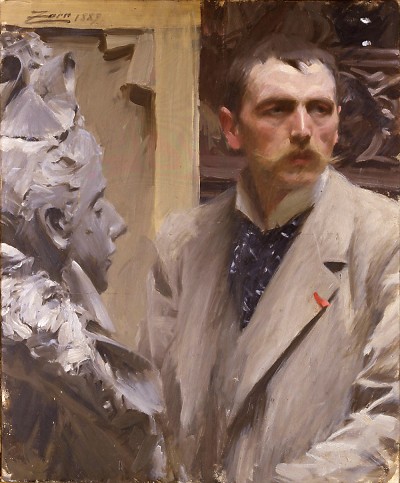
1. Self-Portrait With Sculpture
Painted
at 29, this portrait vividly exhibits
the Zorn trademark of extraordinarily
free brushwork, with a decided rhythm
of strokes blending from one form
into another, across the edges or
contours. The light here is falling
from a high source (possible a skylight).
This painting, like many Zorn works,
includes a strong story-telling
aspect—the young artist is
shown in his studio surrounded by
elements of his art: the back of
a large stretched canvas and a sculpture
work-in-progress.
The
working artist will note that the
very evident brushstrokes all move
in the direction of the form (i.e.,
down the lapels and the front of
the coat, across the forehead and
cheekbones.
Click portrait to enlarge.
Oil
on canvas, 29 x 25 inches
(74.5cm x 62.5cm)
Uffizzi, Florence
|